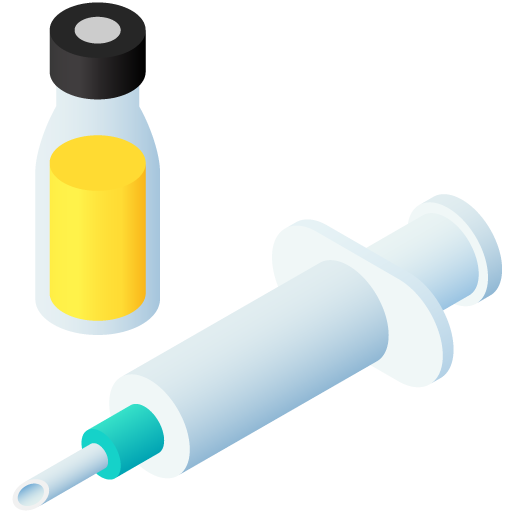Similar packages
Tuloxxin
Active substance
ATC code
Species
Cattle, pigs, sheep.
Indications
Cattle
Treatment and metaphylaxis of bovine respiratory disease (BRD) associated with Mannheimia haemolytica, Pasteurella multocida, Histophilus somni and Mycoplasma bovis. The presence of the disease in the group must be established before the product is used.
Treatment of infectious bovine keratoconjunctivitis (IBK) associated with Moraxella bovis.
Pigs
Treatment and metaphylaxis of swine respiratory disease (SRD) associated with Actinobacillus pleuropneumoniae, Pasteurella multocida, Mycoplasma hyopneumoniae, Haemophilus parasuis and Bordetella bronchiseptica. The presence of the disease in the group must be established before the product is used. The veterinary medicinal product should only be used if pigs are expected to develop the disease within 2–3 days.
Sheep
Treatment of the early stages of infectious pododermatitis (foot rot) associated with virulent Dichelobacter nodosus requiring systemic treatment.
Dose to be administered and administration route
Cattle
Subcutaneous use.
A single subcutaneous injection of 2.5 mg tulathromycin/kg bodyweight (equivalent to 1 ml/40 kg bodyweight). For treatment of cattle over 300 kg bodyweight, divide the dose so that no more than 7.5 ml are injected at one site.
Pigs
Intramuscular use.
A single intramuscular injection of 2.5 mg tulathromycin/kg bodyweight (equivalent to 1 ml/40 kg bodyweight) in the neck.
For treatment of pigs over 80 kg bodyweight, divide the dose so that no more than 2 ml are injected at one site.
For any respiratory disease, it is recommended to treat animals in the early stages of the disease and to evaluate the response to treatment within 48 hours after injection. If clinical signs of respiratory disease persist or increase, or if relapse occurs, treatment should be changed, using another antibiotic, and continued until clinical signs have resolved.
Sheep
Intramuscular use.
A single intramuscular injection of 2.5 mg tulathromycin/kg body weight (equivalent to 1 ml/40 kg body weight) in the neck.
To ensure correct dosage bodyweight should be determined as accurately as possible to avoid underdosing. The cap may be safely punctured up to 20 times. When treating groups of animals in one run, use a draw-off needle that has been placed in the vial stopper to avoid excess broaching of the stopper. The draw-off needle should be removed after treatment.
Adverse reactions
Cattle:
|
Very common (>1 animal / 10 animals treated): |
Injection site reactions (congestion, oedema, fibrosis, haemorrhage, pain)1 |
1Reversible. May be observed or persist for approximately 30 days after injection.
Pigs:
|
Very common (>1 animal / 10 animals treated): |
Injection site reactions (congestion, oedema, fibrosis, haemorrhage)1 |
1Reversible, may be observed approximately for 30 days after injection.
Sheep:
|
Very common (>1 animal / 10 animals treated): |
Discomfort (head shaking, rubbing injection site, backing away)1 |
1The signs resolve within a few minutes.
Reporting adverse events is important. It allows continuous safety monitoring of a veterinary medicinal product. Reports should be sent, preferably via a veterinarian, to either the marketing authorisation holder or its local representative or the national competent authority via the national reporting system. See also the package leaflet for contact details.
Dispensing
POM-V - Prescription Only Medicine – VeterinarianEMA Categorisation
SUMMARY OF PRODUCT CHARACTERISTICS
1. NAME OF THE VETERINARY MEDICINAL PRODUCT
Tuloxxin 100 mg/ml solution for injection for cattle, pigs and sheep
2. QUALITATIVE AND QUANTITATIVE COMPOSITION
1 ml contains
Active substance: Tulathromycin 100 mg
Excipients:
Monothioglycerol 5 mg
For the full list of excipients, see section 6.1.
3. PHARMACEUTICAL FORM
Solution for injection
Clear, colourless to slightly yellow or slightly brown solution.
4. CLINICAL PARTICULARS
4.1 Target species
Cattle, pigs and sheep
4.2 Indications for use, specifying the target species
Cattle
Treatment and metaphylaxis of bovine respiratory disease (BRD) associated with Mannheimia haemolytica, Pasteurella multocida, Histophilus somni and Mycoplasma bovis susceptible to tulathromycin. The presence of the disease in the group must be established before the product is used.
Treatment of infectious bovine keratoconjunctivitis (IBK) associated with Moraxella bovis susceptible to tulathromycin.
Pigs
Treatment and metaphylaxis of swine respiratory disease (SRD) associated with Actinobacillus pleuropneumoniae, Pasteurella multocida, Mycoplasma hyopneumoniae, Haemophilus parasuis and Bordetella bronchiseptica susceptible to tulathromycin. The presence of the disease in the group must be established before the product is used. The veterinary medicinal product should only be used if pigs are expected to develop the disease within 2–3 days.
Sheep
Treatment of the early stages of infectious pododermatitis (foot rot) associated with virulent Dichelobacter nodosus requiring systemic treatment.
4.3 Contraindications
Do not use in cases of hypersensitivity to macrolide antibiotics or to any of the excipients.
4.4 Special warnings for each target species
Cross resistance occurs with other macrolides. Do not administer simultaneously with antimicrobials with a similar mode of action such as other macrolides or lincosamides.
Sheep:
The efficacy of antimicrobial treatment of foot rot might be reduced by others factors, such as wet environmental conditions, as well as inappropriate farm management. Treatment of foot rot should therefore be undertaken along with other flock management tools, for example providing dry environment.
Antibiotic treatment of benign foot rot is not considered appropriate. Tulathromycin showed limited efficacy in sheep with severe clinical signs or chronic foot rot, and should therefore only be given at an early stage of foot rot.
4.5 Special precautions for use
Special precautions for use in animals
Use of the product should be based on susceptibility testing of the bacteria isolated from the animal.
If this is not possible, therapy should be based on local (regional, farm level) epidemiological information about susceptibility of the target bacteria.
Official, national and regional antimicrobial policies should be taken into account when the product is used.
Use of the product deviating from the instructions given in the SPC may increase the prevalence of bacteria resistant to tulathromycin and may decrease the effectiveness of treatment with other macrolides, lincosamides and group B streptogramins, due to the potential for cross resistance.
If a hypersensitivity reaction occurs appropriate treatment should be administered without delay.
Special precautions to be taken by the person administering the veterinary medicinal product to animals
Tulathromycin is irritating to eyes. In case of accidental eye exposure, flush the eyes immediately with clean water.
Tulathromycin may cause sensitisation by skin contact. In case of accidental spillage onto skin, wash the skin immediately with soap and water.
Wash hands after use.
In case of accidental self-injection, seek medical advice immediately and show the package leaflet or the label to the physician.
4.6 Adverse reactions (frequency and seriousness)
Subcutaneous administration of the veterinary medicinal product to cattle causes very commonly transient pain reactions and local swellings at the injection site that can persist for up to 30 days. No such reactions have been observed in pigs and sheep after intramuscular administration.
Pathomorphological injection site reactions (including reversible changes of congestion, oedema, fibrosis and haemorrhage) are very common for approximately 30 days after injection in cattle and pigs.
In sheep transient signs of discomfort (head shaking, rubbing injection site, backing away) are very common after intramuscular injection. These signs resolve within a few minutes.
The frequency of adverse reactions is defined using the following convention:
- very common (more than 1 in 10 animals treated displaying adverse reaction(s))
- common (more than 1 but less than 10 animals in 100 animals treated)
- uncommon (more than 1 but less than 10 animals in 1,000 animals treated)
- rare (more than 1 but less than 10 animals in 10,000 animals treated)
- very rare (less than 1 animal in 10,000 animals treated, including isolated reports).
4.7 Use during pregnancy, lactation or lay
Laboratory studies in rats and rabbits have not produced any evidence of teratogenic, foetotoxic or maternotoxic effects. The safety of the veterinary medicinal product has not been established during pregnancy and lactation. Use only according to the benefit/risk assessment by the responsible veterinarian.
4.8 Interaction with other medicinal products and other forms of interaction
None known.
4.9 Amounts to be administered and administration route
Cattle
Subcutaneous use.
A single subcutaneous injection of 2.5 mg tulathromycin/kg bodyweight (equivalent to 1 ml/40 kg bodyweight). For treatment of cattle over 300 kg bodyweight, divide the dose so that no more than 7.5 ml are injected at one site.
Pigs
Intramuscular use.
A single intramuscular injection of 2.5 mg tulathromycin/kg bodyweight (equivalent to 1 ml/40 kg bodyweight) in the neck.
For treatment of pigs over 80 kg bodyweight, divide the dose so that no more than 2 ml are injected at one site.
For any respiratory disease, it is recommended to treat animals in the early stages of the disease and to evaluate the response to treatment within 48 hours after injection. If clinical signs of respiratory disease persist or increase, or if relapse occurs, treatment should be changed, using another antibiotic, and continued until clinical signs have resolved.
Sheep
Intramuscular use.
A single intramuscular injection of 2.5 mg tulathromycin/kg body weight (equivalent to 1 ml/40 kg body weight) in the neck.
To ensure correct dosage bodyweight should be determined as accurately as possible to avoid underdosing. The cap may be safely punctured up to 20 times. When treating groups of animals in one run, use a draw-off needle that has been placed in the vial stopper to avoid excess broaching of the stopper. The draw-off needle should be removed after treatment.
4.10 Overdose (symptoms, emergency procedures, antidotes), if necessary
In cattle at dosages of three, five or ten times the recommended dose, transient signs attributed to injection site discomfort were observed and included restlessness, headshaking, pawing the ground, and brief decrease in feed intake. Mild myocardial degeneration has been observed in cattle receiving five to six times the recommended dose.
In young pigs weighing approximately 10 kg given three or five times the therapeutic dose transient signs attributed to injection site discomfort were observed and included excessive vocalisation and restlessness. Lameness was also observed when the hind leg was used as the injection site.
In lambs (approx. 6 weeks old), at dosages of three or five times the recommended dose, transient signs attributed to injection site discomfort were observed, and included walking backwards, head shaking, rubbing the injection site, lying down and getting up, bleating.
4.11 Withdrawal period(s) Cattle (meat and offal): 22 days.
Pigs (meat and offal): 13 days.
Sheep (meat and offal): 16 days.
Not authorised for use in animals producing milk for human consumption. Do not use in pregnant animals, which are intended to produce milk for human consumption, within 2 months of expected parturition.
5. PHARMACOLOGICAL PROPERTIES
Pharmacotherapeutic group: Antibacterials for systemic use, macrolides. ATC vet code: QJ01FA94.
5.1 Pharmacodynamic properties
Tulathromycin is a semi-synthetic macrolide antimicrobial agent, which originates from a fermentation product. It differs from many other macrolides in that it has a long duration of action that is, in part, due to its three amine groups; therefore it has been given the chemical subclass designation of triamilide.
Macrolides are bacteriostatic acting antibiotics and inhibit essential protein biosynthesis by virtue of their selective binding to bacterial ribosomal RNA. They act by stimulating the dissociation of peptidyl-tRNA from the ribosome during the translocation process.
Tulathromycin possesses in vitro activity against Mannheimia haemolytica, Pasteurella multocida, Histophilus somni and Mycoplasma bovis, and Actinobacillus pleuropneumoniae, Pasteurella multocida, Mycoplasma hyopneumoniae, Haemophilus parasuis and Bordetella bronchiseptica the bacterial pathogens most commonly associated with bovine and swine respiratory disease, respectively. Increased minimum inhibitory concentration (MIC) values have been found in some isolates of Histophilus somni and Actinobacillus pleuropneumoniae. In vitro activity against Dichelobacter nodosus (vir), the bacterial pathogen most commonly associated with infectious pododermatitis (foot rot) in sheep has been demonstrated.
Tulathromycin also possesses in vitro activity against Moraxella bovis, the bacterial pathogen most commonly associated with infectious bovine keratoconjunctivitis (IBK).
The Clinical and Laboratory Standards Institute CLSI has set the clinical breakpoints for tulathromycin against M. haemolytica, P. multocida, and H. somni of bovine respiratory origin and P. multocida and B. bronchiseptica of swine respiratory origin as ≤16 μg/ml susceptible and ≥64 μg/ml resistant. For A. pleuropneumoniae of swine respiratory origin the susceptible breakpoint is set at ≤64 µg/ml. CLSI has also published clinical breakpoints for tulathromycin based on a disk diffusion method (CLSI document VET08, 4th ed, 2018). No clinical breakpoints are available for H. parasuis. Neither EUCAST nor CLSI have developed standard methods for testing antibacterial agents against veterinary Mycoplasma species and thus no interpretative criteria have been set.
Resistance to macrolides can develop by mutations in genes encoding ribosomal
RNA (rRNA) or some ribosomal proteins; by enzymatic modification (methylation) of the 23S rRNA target site, generally giving rise to cross-resistance with lincosamides and group B streptogramins (MLSB resistance); by enzymatic inactivation; or by macrolide efflux. MLSB resistance may be constitutive or inducible. Resistance may be chromosomal or plasmid-encoded and may be transferable if associated with transposons, plasmids, integrative and conjugative elements. Additionally, the genomic plasticity of Mycoplasma is enhanced by the horizontal transfer of large chromosomal fragments.
In addition to its antimicrobial properties, tulathromycin demonstrates immunemodulating and anti-inflammatory actions in experimental studies. In both bovine and porcine polymorphonuclear cells (PMNs; neutrophils), tulathromycin promotes apoptosis (programmed cell death) and the clearance of apoptotic cells by macrophages. It lowers the production of the pro-inflammatory mediators leukotriene B4 and CXCL-8 and induces the production of anti-inflammatory and pro-resolving lipid lipoxin A4.
5.2 Pharmacokinetic particulars
In cattle, the pharmacokinetic profile of tulathromycin when administered as a single subcutaneous dose of 2.5 mg/kg bodyweight, was characterised by rapid and extensive absorption followed by high distribution and slow elimination. The maximum concentration (C ) in plasma was approximately 0.5 μg/ml; this was
max
achieved approximately 30 minutes post-dosing (T ). Tulathromycin concentrations
max
in lung homogenate were considerably higher than those in plasma. There is strong evidence of substantial accumulation of tulathromycin in neutrophils and alveolar macrophages. However, the in vivo concentration of tulathromycin at the infection site of the lung is not known. Peak concentrations were followed by a slow decline in systemic exposure with an apparent elimination half-life (t ) of 90 hours in plasma.
1/2
Plasma protein binding was low, approximately 40%. The volume of distribution at steady-state (V ) determined after intravenous administration was 11 l/kg. The
ss
bioavailability of tulathromycin after subcutaneous administration in cattle was approximately 90%.
In pigs, the pharmacokinetic profile of tulathromycin when administered as a single intramuscular dose of 2.5 mg/kg bodyweight, was also characterised by rapid and extensive absorption followed by high distribution and slow elimination. The maximum concentration (C ) in plasma was approximately 0.6 μg/ml; this was
max
achieved approximately 30 minutes post-dosing (T ). Tulathromycin concentrations
max
in lung homogenate were considerably higher than those in plasma. There is strong evidence of substantial accumulation of tulathromycin in neutrophils and alveolar macrophages. However, the in vivo concentration of tulathromycin at the infection site of the lung is not known. Peak concentrations were followed by a slow decline in
systemic exposure with an apparent elimination half-life (t ) of approximately 91
1/2
hours in plasma. Plasma protein binding was low, approximately 40%. The volume of distribution at steady-state (V ) determined after intravenous administration was 13.2
ss
l/kg. The bioavailability of tulathromycin after intramuscular administration in pigs was approximately 88%.
In sheep, the pharmacokinetic profile of tulathromycin, when administered as a single intramuscular dose of 2.5 mg/kg bodyweight, achieved a maximum plasma
concentration (C ) of 1.19 μg/ml in approximately 15 minutes (T ) post-dosing max max
and had an elimination half-life (t ) of 69.7 hours. Plasma protein binding was
1/2
approximately 60-75%. Following intravenous dosing the volume of distribution at steady-state (Vss) was 31.7 l/kg. The bioavailability of tulathromycin after intramuscular administration in sheep was 100%.
6. PHARMACEUTICAL PARTICULARS
6.1 List of excipients
Propylene glycol
Monothioglycerol
Citric acid
Hydrochloric acid (for pH adjustment)
Sodium hydroxide (for pH adjustment)
Water for injections
6.2 Major incompatibilities
In the absence of compatibility studies, this veterinary medicinal product must not be mixed with other veterinary medicinal products.
6.3 Shelf life
Shelf life of the veterinary medicinal product as packaged for sale: 3 years. Shelf life after first opening the immediate packaging: 28 days.
6.4 Special precautions for storage
No special temperature storage conditions are required. Store in the original container.
Once opened, store below 25°C.
6.5 Nature and composition of immediate packaging
Type I clear glass bottles of 50 ml, 100 ml or 250 ml with Type I chlorobutyl/butyl film laminated rubber stoppers and aluminium caps with plastic tear/flip-off tabs, in a cardboard box.
Not all pack sizes may be marketed.
6.6 Special precautions for the disposal of unused veterinary medicinal product or waste materials derived from the use of such products
Any unused veterinary medicinal product or waste materials derived from such veterinary medicinal product should be disposed of in accordance with local requirements.
7. MARKETING AUTHORISATION HOLDER
KRKA, d.d., Novo mesto
Šmarješka cesta 6
8501 Novo mesto
Slovenia
8. MARKETING AUTHORISATION NUMBER
Vm 01656/4150
9. DATE OF FIRST AUTHORISATION
07 February 2019
10. DATE OF REVISION OF THE TEXT
06 July 2023
Approved 06 July 2023
![]()

 TRUSTED SOURCE
TRUSTED SOURCE








